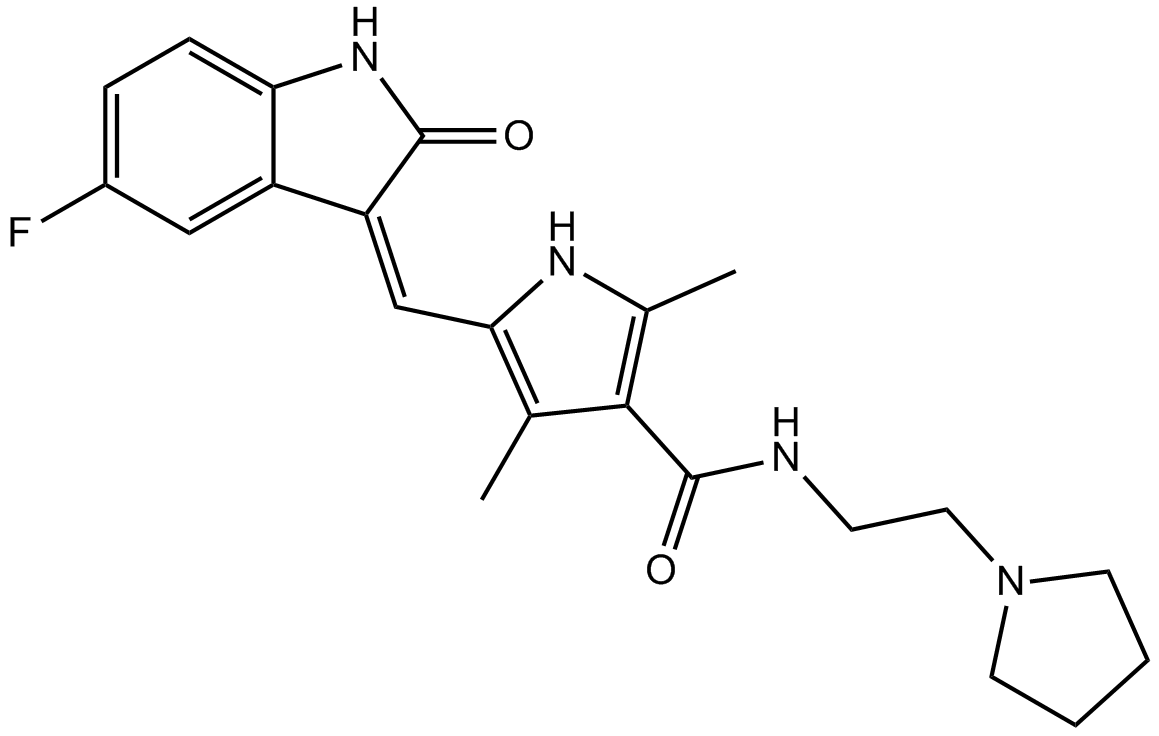Toceranib (Synonyms: PHA 291639, SU11654) |
| Catalog No.GC10719 |
A multi-targeted receptor tyrosine kinase inhibitor
Products are for research use only. Not for human use. We do not sell to patients.

Cas No.: 356068-94-5
Sample solution is provided at 25 µL, 10mM.
Toceranib is an inhibitor which blocks various tyrosine kinases expressed on the cell surface. Receptor tyrosine kinases (RTKs) are excellent candidates for molecular targeted therapy, because they play key roles in controlling cell proliferation and survival and are frequently dysregulated in a variety of malignancies.
In vitro: Toceranib inhibited KIT phosphorylation and cell proliferation in a dose-dependent manner in the treatment-naïve, parental C2 line (IC50 < 10 nM). In addition, chronic TOC exposure resulted in c-kit mRNA and KIT protein overexpression in the TOC-resistant sublines [1].
In vivo: Fourteen dogs with advanced mast cell tumors (MCTs) were enrolled in a prevoius study, among which 11 dogs were evaluable for KIT target modulation. Of these, eight MCTs showed reduced levels of phosphorylated KIT relative to total KIT after treatment with Toceranib, compared with pretreatment biopsies. All four evaluable MCTs expressing ITD mutant c-kit showed modulation of KIT phosphorylation, as did four of seven tumors expressing non-ITD c-kit. [2].
Clinical trials: Currenlty no clinical data are available.
References:
[1] Halsey CH, Gustafson DL, Rose BJ, Wolf-Ringwall A, Burnett RC, Duval DL, Avery AC, Thamm DH. Development of an in vitro model of acquired resistance to toceranib phosphate (Palladia®) in canine mast cell tumor. BMC Vet Res. 2014;10:105. doi: 10.1186/1746-6148-10-105.
[2] Pryer NK, Lee LB, Zadovaskaya R, Yu X, Sukbuntherng J, Cherrington JM, London CA. Proof of target for SU11654: inhibition of KIT phosphorylation in canine mast cell tumors. Clin Cancer Res. 2003;9(15):5729-34.
Average Rating: 5 (Based on Reviews and 30 reference(s) in Google Scholar.)
GLPBIO products are for RESEARCH USE ONLY. Please make sure your review or question is research based.
Required fields are marked with *




















